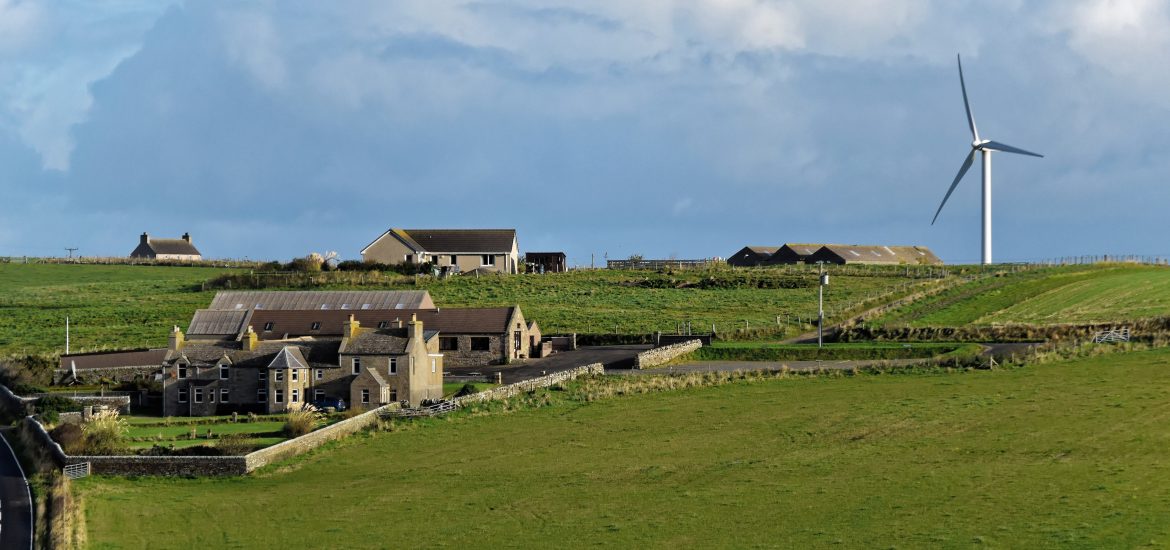
Over the past 150 years, one cost has vexed the oil and gas industry more than any other: transport. The usually vast distances between producing fields and consuming markets made transportation the highest cost for consuming them. This conundrum is proving just as vexing for renewables in some ways, the most recent case being onshore wind power in northern Scotland.
Scottish wind, with its fabulous resources and sound legal framework, is a veritable success story. Yet bringing all that northern wind south to markets is raising network charges and threatening the sector’s expansion, according to Cornwall Insight. Consultant James Brabben said the firm’s “calculations show that on average embedded onshore wind generators in Northern Scotland have seen balancing service use of system (BSUoS) go from a small net positive embedded benefit of £0.10/MWh for May 2018 to a near £4.0/MWh charge by March 2019.”
If high network costs, which coincided with a surge in production in the first half of 2019, cannot be reigned in, investors will flee, potentially leaving stranded assets and undermining plans to develop 800 megawatts (MW) of remote island wind projects. Aware of the problem, Scottish Power announced in June that it will build a 50-MW battery at Whitelee wind farm, but this alone will not solve the problem – more storage capacity and transmission lines need to be built to do so. How the battle plays out between rising network costs and infrastructure investments will say a lot about the UK’s energy future and is a litmus test for renewables more broadly.
Scottish advantages
In many ways, Scottish wind is too big to fail. The resource base, for starters, is truly massive. Northern Scotland is also less densely populated than most all other wind-rich parts of Europe. This translates to favorable capacity factors – easily meeting peak rate demands by customers – and leaves plenty of power for export. Lower population density also means cheaper land for developers and less opposition from residents to development.
The Scottish government, meanwhile, actively nurtures the sector with incentives and transparent legal and regulatory structures. Wind alone can already power all Scottish homes twice over, and Scotland is well on track to meet its stated goal of supplying 100% of its electricity demand with renewables. Moreover, Scotland makes up a major portion of the UK’s overall consumption of renewables. It aims to keep it that way by developing offshore wind in 2020.
In the 1980s, North Sea oil and gas benefitted from mature legal and market structures and proximity to consumers. Scottish wind has similar advantages and is on the right side of the fight against climate change.
Buyer and seller
Still, price matters, and the recent surge in network charges presents a crucible for the sector. Brabben outlines what is a clear but solvable problem: “The significant amounts of generation in Northern Scotland are located away from areas of demand further south. This contributed to a much higher transmission network use of system (TNUoS) bill for projects in the region. As an example, the TNUoS charge for a typical intermittent renewable generator in zone 1 in North Scotland for 2019-20 is £19.03/kW, compared to -£2.50kW (negative) in Essex and Kent. Currently, the more wind added to the system located further away from demand, the higher the cost of constraint payments to help balance this.”
Since BSUoS charges redress system imbalances, they have unsurprisingly risen. “BSUoS has also impacted embedded generators in Northern Scotland, where the large difference between generation levels and demand at the distribution level grid supply points (GSPs) sees BSUoS often ‘flip’ to become a charge for generators located in GSPs where embedded generation is greater than demand,” according to Brabben.
Network charging is a wet blanket for UK renewables. But, Brabben added, “out of these current system issues does come opportunity.”
A greening UK
The momentum towards renewables in the UK is virtually unstoppable. The British coal industry is on its last legs, and in May, Britain abstained from using any coal for two straight weeks. Meanwhile, political opposition to climate change is catalyzing policy and producing real results. In 2017, the UK generated more power with nuclear, solar, and wind than coal and natural gas combined. The future of the UK may be outside of Europe but it is green.
Building more lines to southern markets, managing constraints, and adding battery storage are clear and present solutions for Scottish wind. The question is whether it is willing to invest in them and makes the correct choices on such investments. Scotland is on the front line of the battle against climate change. We should all root for it to meet this challenge.
Photo credit: pxhere.






Thank you to John Bowlus for his interest in the Scottish wind energy sector.
“Aware of the problem, Scottish Power announced in June that it will build a 50-MW battery at Whitelee wind farm, dubbed the most ambitious power storage project in Europe.”
Not “dubbed” by me and not in the least “ambitious” in my opinion.
Scottish Power is run by accountants who don’t have a clue how to design and build a 100% renewable energy electricity grid, as they are demonstrating with this pathetic super-fail battery.
The scale of energy storage capacity that is required means that batteries are the wrong technology choice for 100% renewable energy – much too expensive to build the size of capacity that is needed.
The appropriate grid energy storage technologies are pumped storage hydroelectricity and power-to-gas making hydrogen fuel gas by electrolysis of water.
Scottish Power should consult their parent company Iberdrola, who know all about pumped storage hydroelectricity.
https://www.iberdrola.com/environment/pumped-storage-hydropower
This battery will have only a mere 50MW for at most one hour – a 50 MWh energy storage capacity, which is inadequate to delivery renewable energy on demand using Whitelee Wind Farm’s energy. The battery is a gimmick, that’s all.
50 to 70 times more energy storage capacity is required – 2,500 MWh to 3,500 MWh – to store of the order of one day’s average wind energy generation from the wind farm.
This links to the Wind Generation Capacity Focus Table for a 539MW wind farm, like Whitelee.
http://scottish.scienceontheweb.net/Wind%20power%20storage%20back-up%20calculator.htm?wind=539#wind
The “Wind Power” variable has been set to 539 MW. The default capacity factor for the table is 24% but that can be reset with the appropriate capacity factor for the particular wind farm, which can be estimated by dividing the actual energy generated in one year by 539 MW x 24 h/day x 365 days. Whitelee’s website assumes 27% but others say in practice it is less than that.
For Capacity Factor 24%, the table rows recommend an energy storage capacity of between 2590 MWh and 2870 MWh.
The table rows offer peak demand configuration rows of between 77 MW (Row A) and 539 MW (Row H) and the back-up power required for that varies from 0 MW (Row A) and 302 MW (Row H).
So for example, the Row E configuration is
Peak Demand Power: 200 MW
Daily Usage of Energy: 2990 MWh
Wind Power Capacity: 539 MW
Capacity Factor: 24%
Wind energy per day (average): 3100 MWh
Storage Energy Capacity: 2870 MWh
Back-up power: 79.8 MW
Batteries are too expensive for the energy storage capacity you can afford. Batteries may be an option for isolated micro-grids where other energy options like pumped hydro are not available but a national grid has plenty of options.
It looks like Scottish Power forgot to remember that when a snake-oil battery salesman turns up trying to sell you a “biggest ever” battery which has far too small an energy storage capacity to serve your wind farm adequately then politely but firmly SHOW HIM THE DOOR!
My 100% Renewable Energy Blog
https://scottishscientist.wordpress.com/
* Wind, solar, storage and back-up system designer
* Double Tidal Lagoon Baseload Scheme
* Off-Shore Electricity from Wind, Solar and Hydrogen Power
* World’s biggest-ever pumped-storage hydro-scheme, for Scotland?
* Search for sites to build new pumped-storage hydroelectricity schemes
* Glasa Morie Glass Pumped-Storage Hydro Scheme
* Let’s supersize × 1000 the tiny Glasa hydro scheme!
* Modelling of wind and pumped-storage power
* Scotland Electricity Generation – my plan for 2020
* South America – GREAT for Renewable Energy
Thank you very much for your interest and helpful comment. I have revised the article to reflect your excellent point that the 50-MW battery is but a drop in the bucket for what is needed, and a gimmick at that. The third paragraph has been changed to: “Aware of the problem, Scottish Power announced in June that it will build a 50-MW battery at Whitelee wind farm, but this alone will not solve the problem – more storage capacity and transmission lines need to be built to do so. How the battle plays out between rising network costs and infrastructure investments will say a lot about the UK’s energy future and is a litmus test for renewables more broadly.”
“…The momentum towards renewables in the UK is virtually unstoppable…”
Dear Dr Bowlus,
For the sake of the younger members of your family you should hope against hope your cogitations regarding a renewablers-UK do not come to pass.
Search for: “the ramifications of your activities”